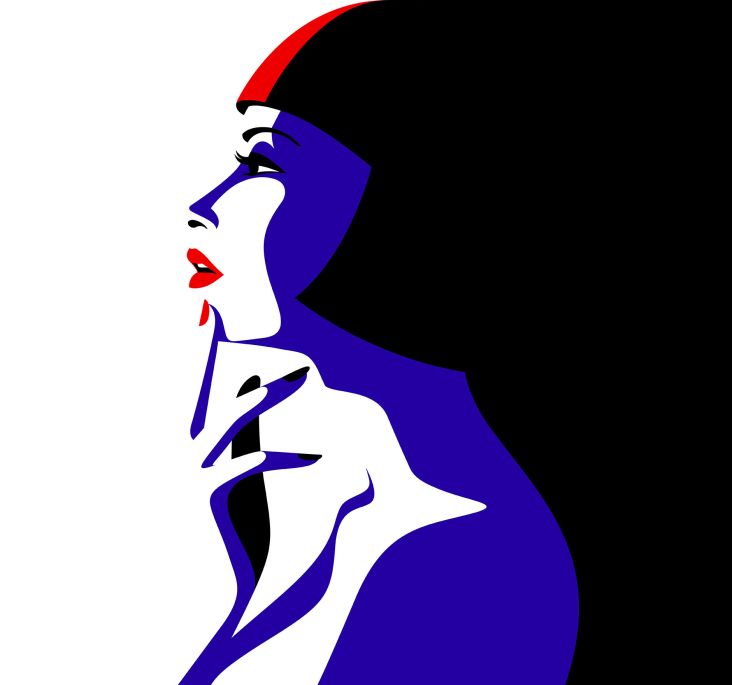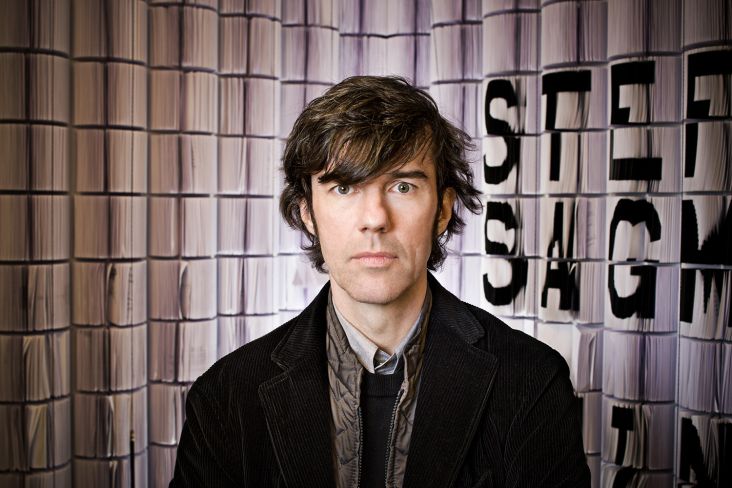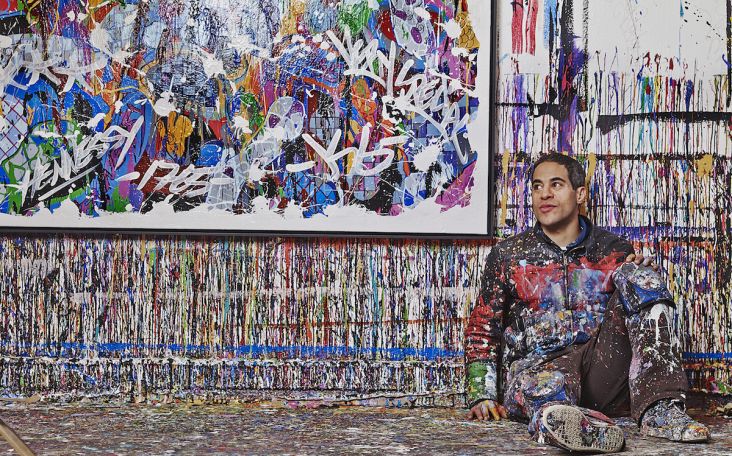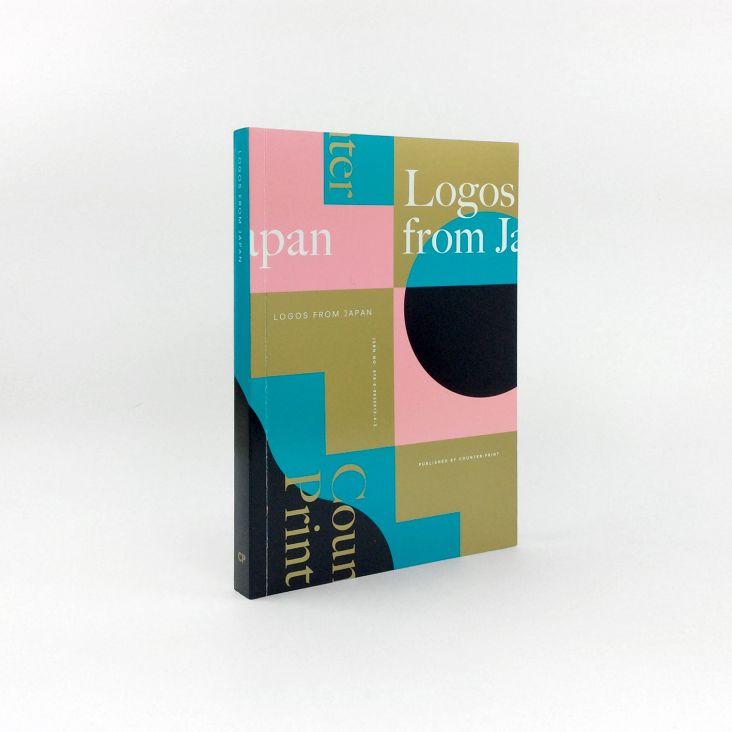Anthony Burrill on acid house, trusting his gut and embracing his independent spirit
If you hear the phrase "Work Hard and Be Nice to People", you'll most definitely think of Anthony Burrill, the much-loved graphic artist, print-maker and designer.
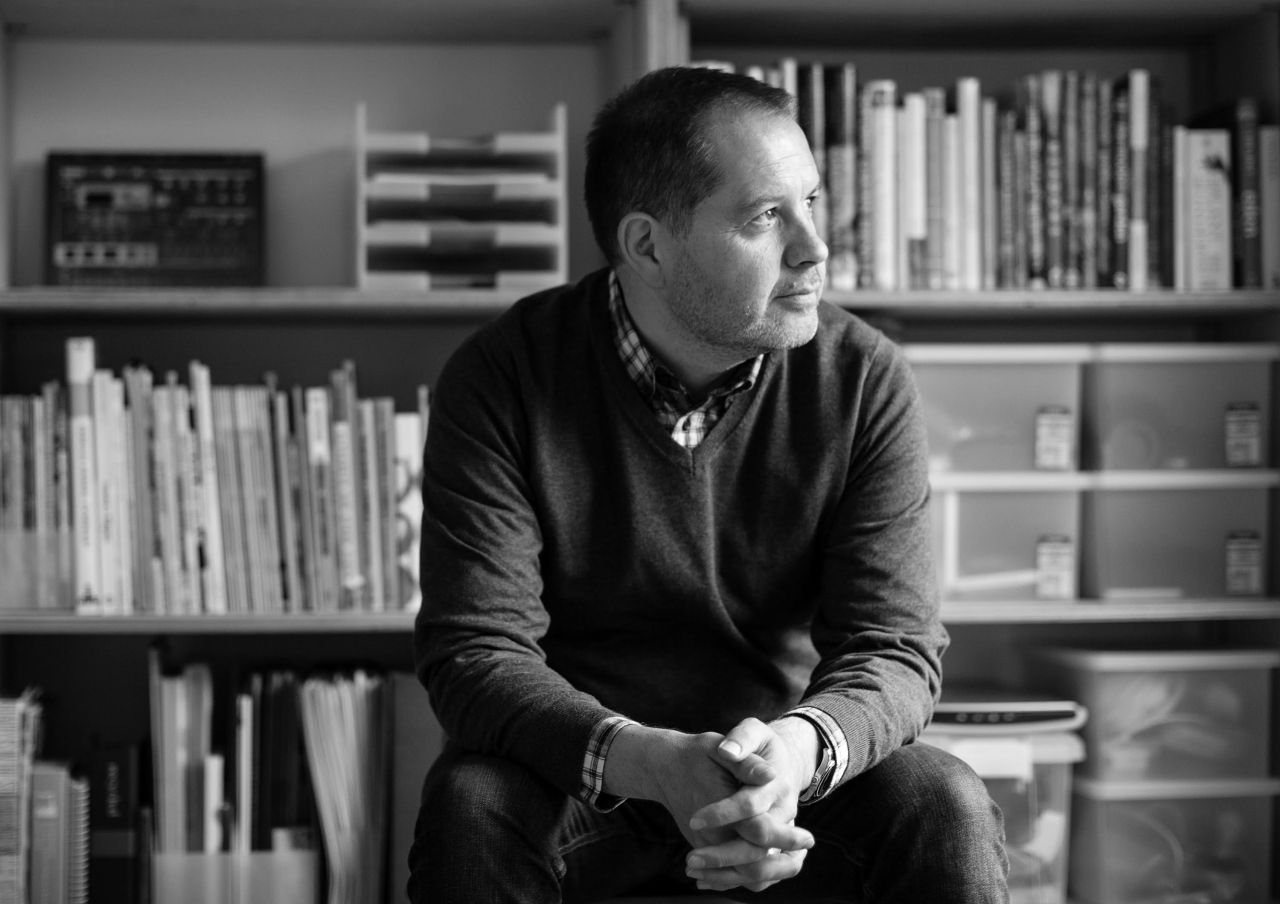
It's become something of a mantra within the design community and reflects his persuasive, positive style of communication that we've all come to know and love.
His iconic work is held in the permanent collections of the Victoria and Albert Museum in London, the Cooper-Hewitt National Design Museum, New York and has been exhibited in galleries around the world including the Barbican Art Gallery, the Walker Art Center and the Design Museum, London.
Words and language play an important role in his output and his distinctive voice is sought after not only by collectors of his posters and prints but also by clients including Apple, Google, Hermés, British Council, London Underground and the Design Museum.
Born in Littleborough, Lancashire, Anthony studied Graphic Design at Leeds Polytechnic before he completed an MA in Graphic Design at the Royal College of Art, London. He now lives and works on the Isle of Oxney, Kent.
On an autumn day in London recently, I met Anthony for lunch. I was early and the first one there, wanting to make a good impression, and ordered a lime and soda half thinking (and hoping), "If this chap is from Lancashire, he'll probably ask that I join him for a pint!" Funny enough, that's exactly what happened. Here's a little of what we talked about over beers and pizza.
When did you realise you wanted to be a designer and artist?
Ever since I can remember I’ve been interested in visual culture, looking at record sleeves, collecting bus tickets, all that stuff. My art teacher at school recommended I went on a foundation course, that’s when I met lots of like-minded people and really started to get excited about art and design.
You've always done your own thing then?
When we all graduated from the Royal College of Art, me and my friends just started doing our own thing. In those days, there wasn't the design scene that there is now. And I couldn't imagine working anywhere really. So I set out on my own.
When did the big break come?
I did some stuff for MTV. That came about from my degree show at the College. Their creative director, Peter Dougherty, came up to me and gave me his business card and said, come see us in Camden. But it took me ages to pluck up the courage to do so. When I finally did, Peter asked me what I wanted to do at MTV and I didn't know. He suggested animation. So I started off making these really weird little animations.
Of course, MTV used to be quite anarchic back then. So you could get away with anything. Which was great. So I spent a couple of years at MTV, freelancing and creating things like on-air menus and graphics, stuff like that.
Is that where the typographic, text-based compositions come from?
I'd always been interested in typography but never really got into it when I was at college. I was kind of faffing around with it. But then that developed as my approach and style evolved. It was a very long gradual development but that was where the seed was planted.
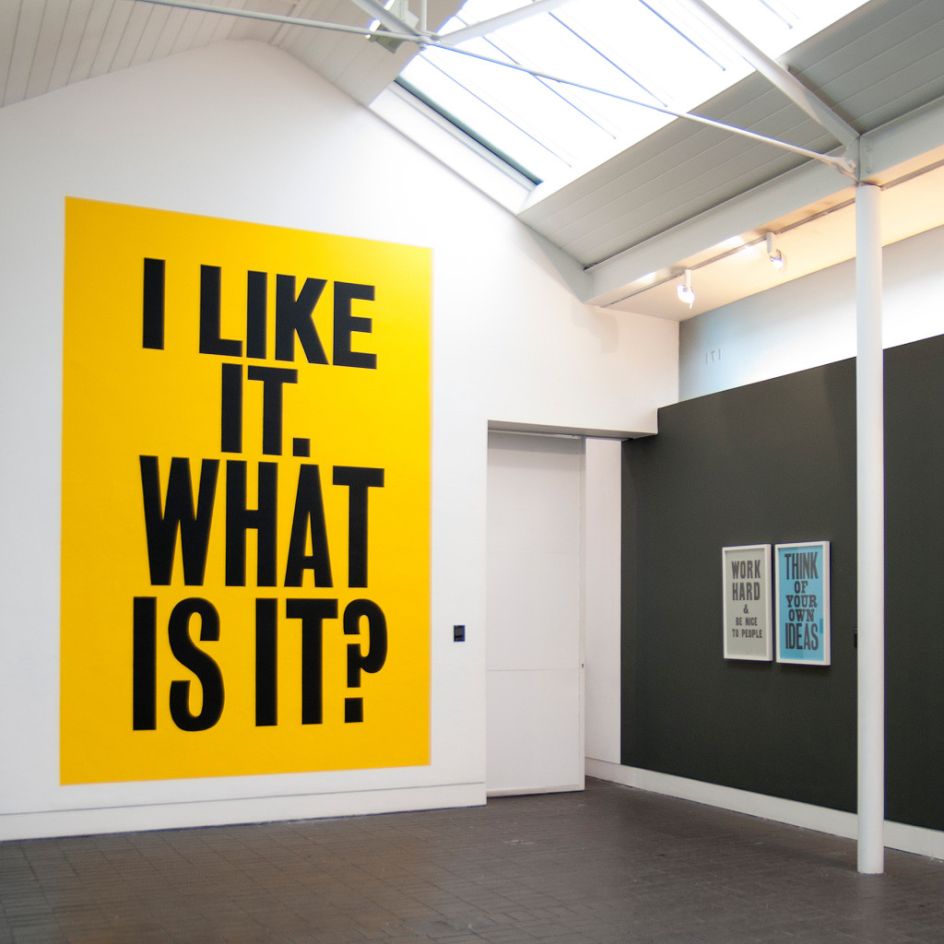
After Hours exhibition at Jerwood Space gallery
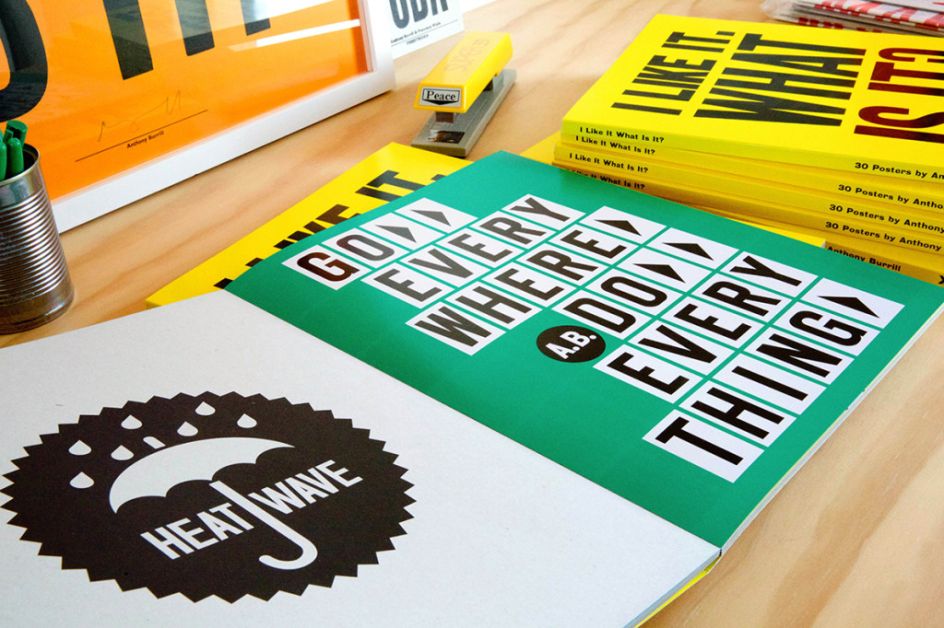
I LIKE IT. WHAT IS IT? 30 Posters by Anthony Burrill Published by Laurence King, designed by APFEL, text by Patrick Burgoyne
You're best known for your typographic prints. What started these messages?
When I was at college, I started creating text-based sketches and notes with different phrases. But it didn't really merge into my work until later on. I've always been interested in words. As much as visuals.
What do you remember from that era?
Well, it was acid house time. We used to go to the Hacienda when I was growing up. It was like living through a revolution, really. The whole dance thing. Because when we first started going out, it was smart-casual. You had to wear a tie and smart shoes. It really was the early days of clubbing.
Do you think those mad nights in Manchester had an influence on your work?
Yes, definitely. Just the whole 'do-it-yourself' Factory Records type of thing. We used to organise our own acid house parties, so that was fun. It was that independent feeling, and I definitely brought that with me to the Royal College of Art. I wasn't really into learning how to be a graphic designer. It was much more about having fun.
As it should be. After graduation and MTV, how did you get your work out there? How did you get noticed?
I used to photocopy my publications and send those out to people. That whole self-publishing movement was something I was quite keen on. And then that led to making letter-press posters.
Like the "Work Hard and Be Nice to People" poster... what was that inspired from?
That was something I overheard in Sainsbury's in Clapham High Street. An old lady in front of me in the queue told the girl on the checkout that the secret to a happy life is to work hard and be nice to people. It's like all my stuff. I just pick things up. It's like a collage. You know. Grabbing things.
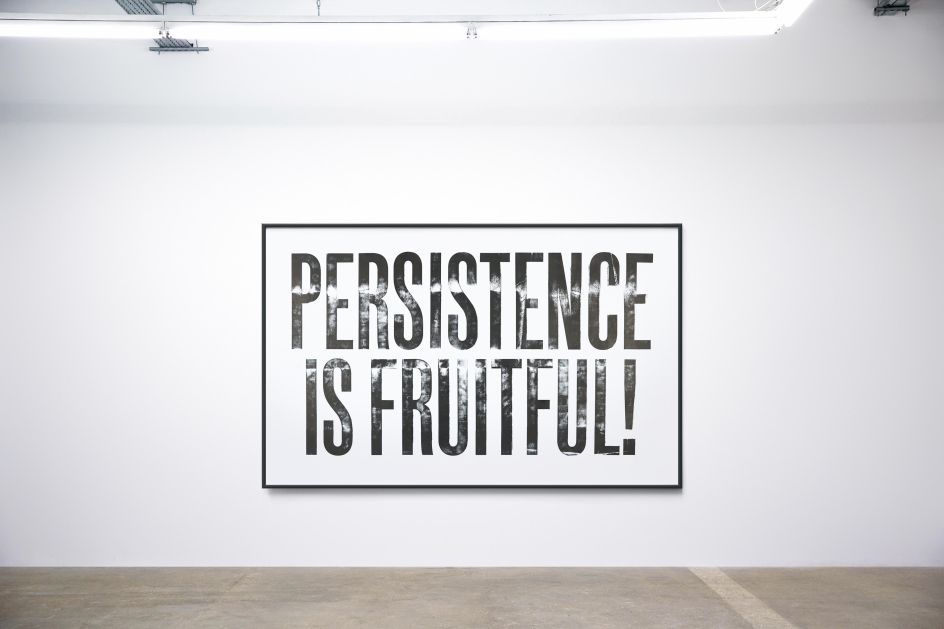
Large scale letterpress print made using a vintage steam roller, commissioned by Ditchling Museum of Art and Craft
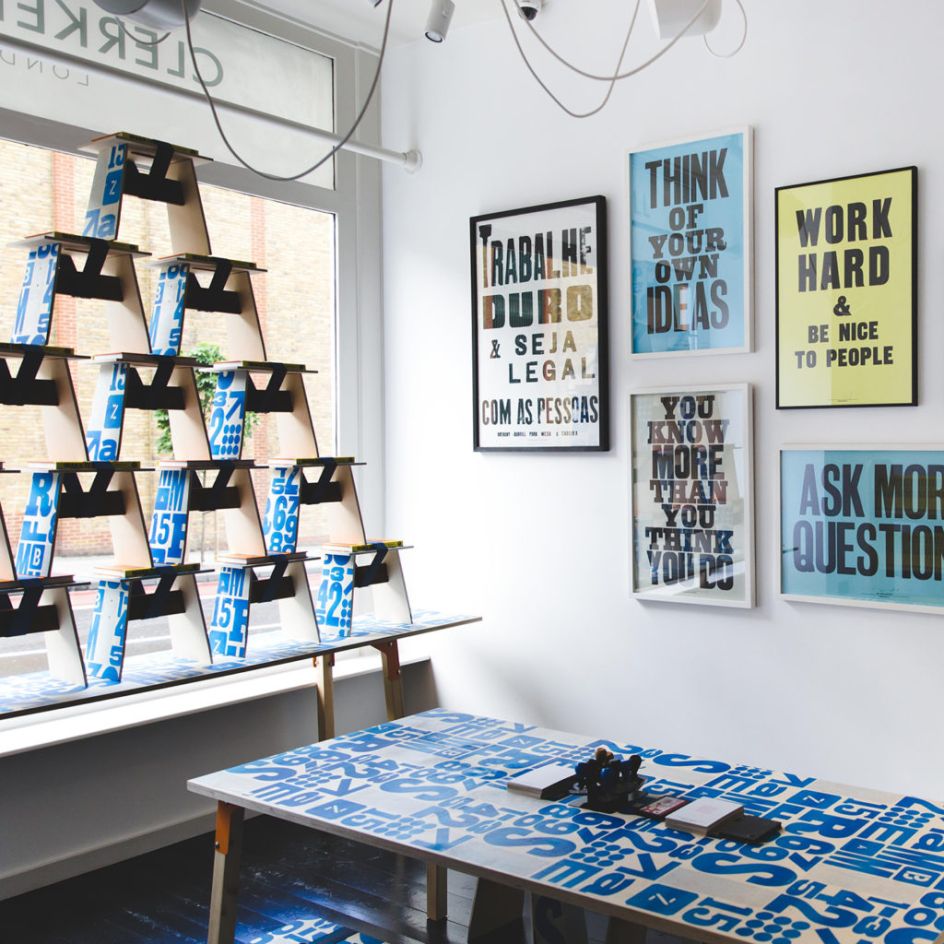
A collection of screen-printed furniture and type-inspired wall clocks, in collaboration with Michael Marriott. Photography by Dunja Opalko
It seems like that's an ethos you stand by, you're obviously a nice guy
Well, I don't think I could do what I do if I wasn't nice. I'm all for not doing the obvious thing. If everyone's doing one thing, I want to do the other. I'm just not into the whole building a big business. I like to keep things real. Just because it feels more natural and more like me. I've always wanted to be an artist, and not just work commercially, but do my own thing.
I think I've managed to develop my own little world. Being me is my job. All this kind of stuff that comes out of that, I don't consciously decide to do things, I do things that feel right. I'm motivated more by instinct and trusting myself.
Have there ever been times when you've not trusted your gut and regretted it?
Yes. Working commercially and focusing on things I wasn't really into. Just because I had to. For a while, I was working in advertising and I stopped doing that. I told my agent one day, "I don't want to do this anymore". It was roughly mid-2000s when I had this lightbulb moment. I'd been involved in a couple of exhibitions, one in Holland. And I thought this is what I really want to do. More self-authored kind of work.
I came home, staged an exhibition in London which loads of people came to, and I thought, right – this is what I want to do from now on. So I stopped the commercial projects and concentrated on my personal work.
Did it feel a bit risky?
My agent was concerned and asked what I was going to do. To be honest, I wasn't really sure. So I took a year off and that gave me the space I needed to figure out next steps.
So the change was much needed?
I suppose I felt I was being held back a bit. By spending too much time working commercially. And I wanted to spread my wings. I also thought this wasn't what I'd gone to college for. I went there to become an artist and do interesting things.
That year was obviously successful?
That's when we also decided to move out to Kent. We'd had kids and London wasn't great for our growing family. I don't know what London's like now in that respect, but at the time it was far from ideal. It felt right to move on.
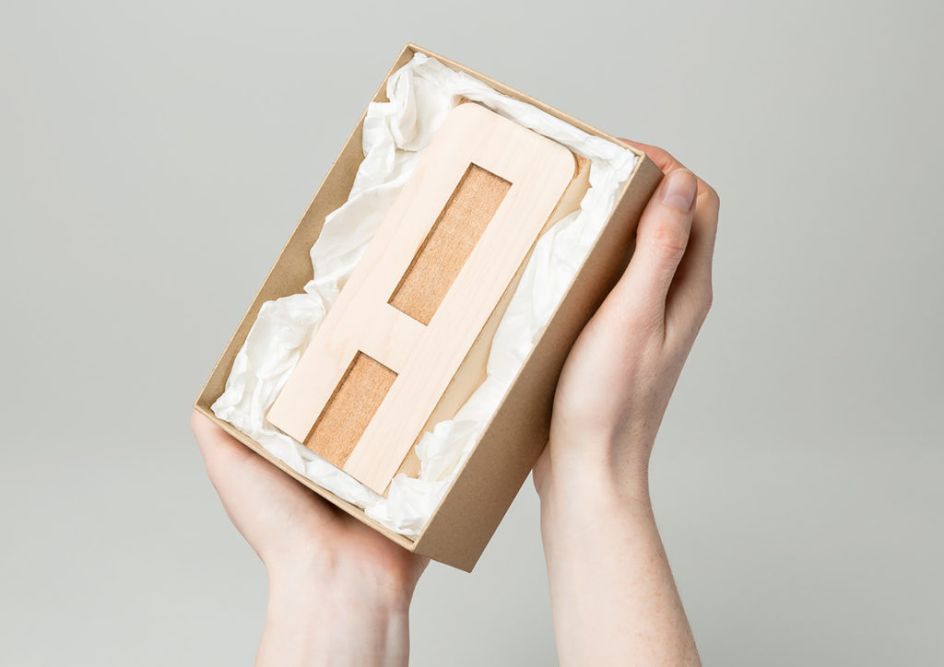
A family of grid based geometric typefaces designed in collaboration with The Designers Foundry
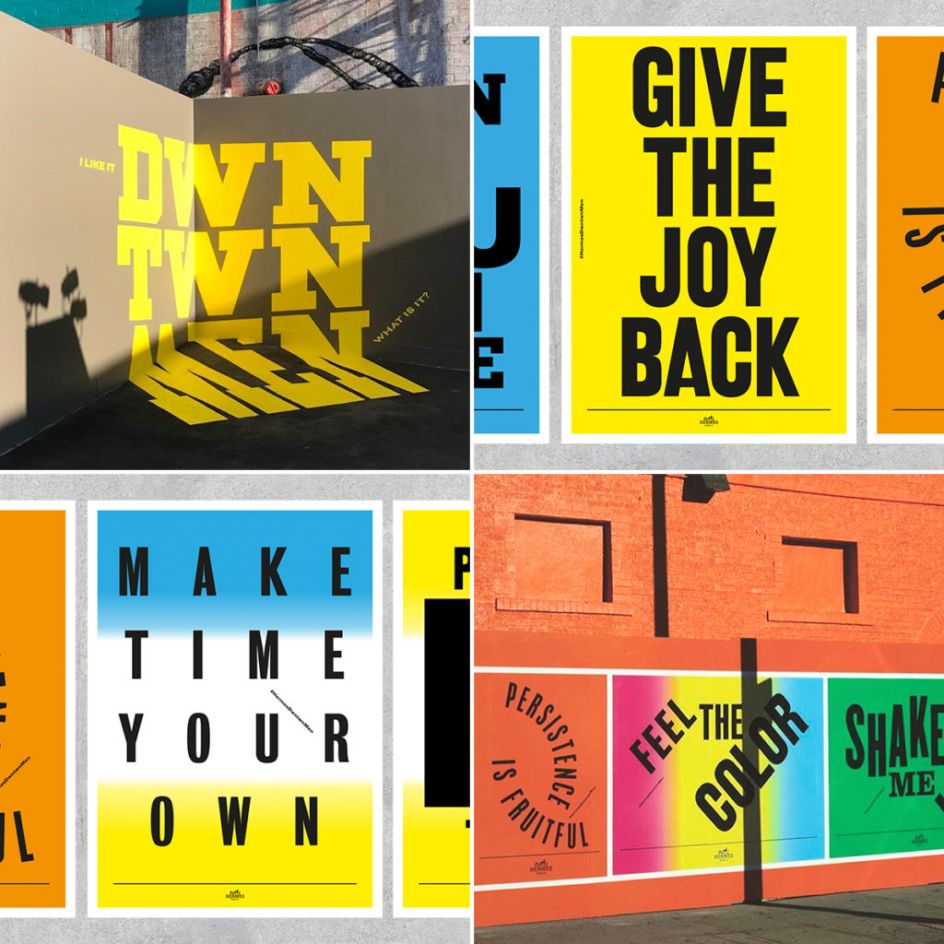
Wall paintings, screen-print posters and animations for Hermès men’s collection launch in LA
Moving out of London hasn't negatively impacted on your career at all, has it!
No. Choosing to spend more time on my own stuff took me on a completely different direction. It led me to where I am now. If I'd carried on doing the same boring work, I would've lost all interest in my career.
When you moved to London as a young twenty-something, was it exciting?
I drove down from Lancashire in my Ford Fiesta, with a couple of bags in the back. It was like, this is the next chapter. I knew people down there already, I instantly felt at home. London is a brilliant place to live when you're a student.
How have you found it's changed over the years?
Oh, it's kind of become boring. It was a lot edgier in those days. You have to pay to do everything now. Whereas back then, if you were a student, you'd have cheap places to go. Don't get me wrong. I still like it. I'm just being nostalgic. Of course, you change, as much as the place changes. Big cities are constantly evolving anyway.
Being a Lancashire lad, what's your favourite pie?
Cheese and onion. Love it.
Moving on. Does bad or lazy design make you angry?
Not much makes me angry. When you see stuff that's a bit tedious, I might shrug my shoulders. I'm into design. But I'm not a massive follower. I'm kind of off doing my own thing.
Is there anything that frustrates you about the industry?
Not really. It's brilliant that there are lots of small studios doing work for their immediate social group, and people doing stuff for each other. Collaborating. Those huge agencies that used to exist, who had a very specific way of doing things, I think those days are gone now. All the interesting work seems to be made by people with their friends.
It's got the Hacienda days feeling all over again?
I think so. Because stuff is so fragmented now, you have to speak to very specific audiences. You see the way high street brands like Topshop have to communicate directly with their customers through social media, for instance. How they embrace the change in retail. It's a big part of the design world too.
It's the same from a content point of view. The Internet disrupted everything but now content and design is more important than ever.
Through social media, you're constantly documenting your daily life and work, and that becomes part of your story. People tap into that and you develop a following, creating your own eco-system that you can exist in.
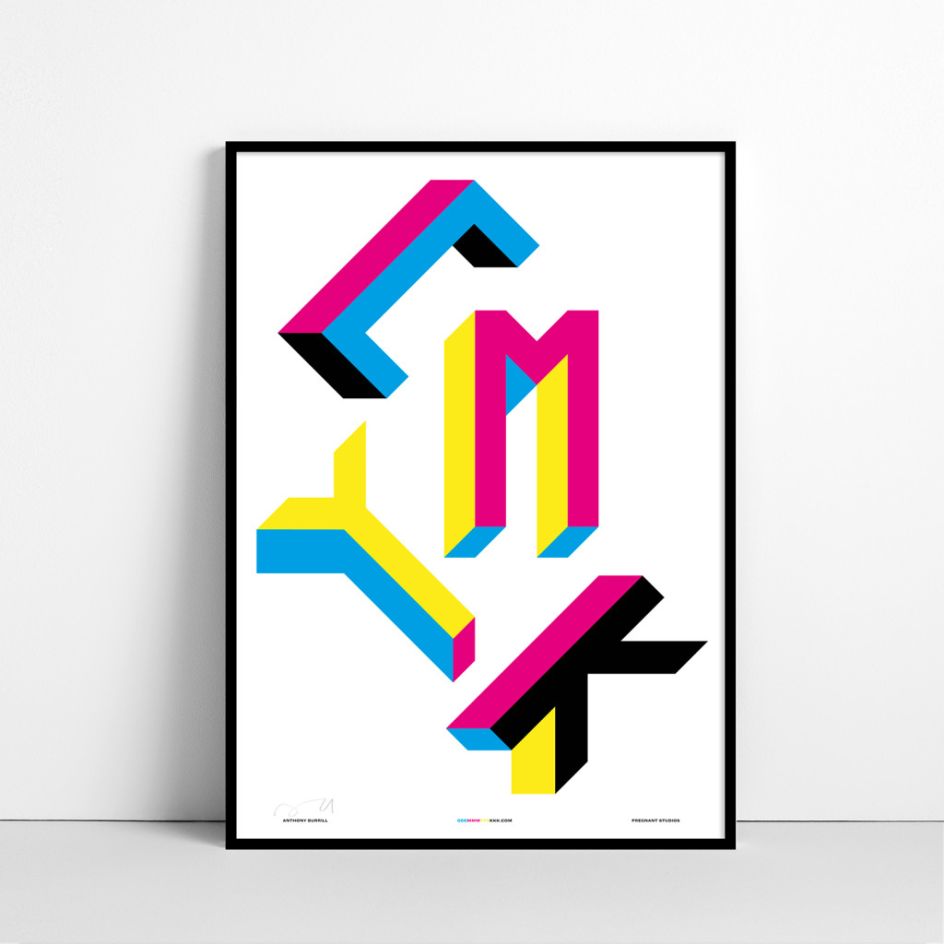
Screen print designed in collab with Mr.Boonstra for Pregnant Studios
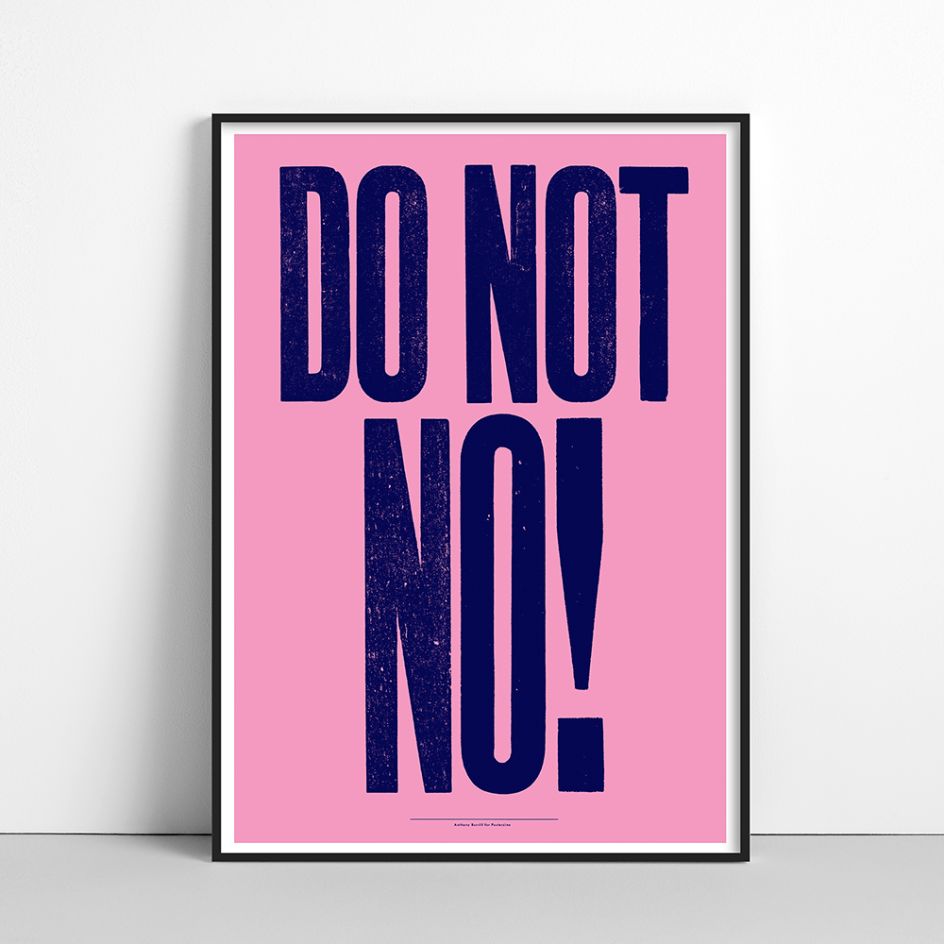
Letterpress print reproduced as two colour litho edition for Posterzine
Do you think design is taken more seriously these days?
You see people celebrated much more. Which is great. But there are so many different designers today, you have to be involved in things that you're interested in and become part of that. You have to find a niche to get noticed. There's so much content and conversation, it can be hard to make an impact and get noticed. That's why you need design blogs, like yours, to sift through that content.
The younger generation is often accused of expecting things to just happen. Do you think they're shy of hard work?
You just find out for yourself, don't you. It's building up experience. When the tide goes out, and you're just there on the beach and there's nothing going on, waiting for the tide to turn again, that's when you realise you have to do something. Keep the momentum going and put yourself out there.
Do you ever suffer from that freelance mentality still?
Oh yeah. From now until Christmas, I've got a few projects on, so that's great. But after Christmas, nothing. But then something always happens or turns up.
That'll be so reassuring to younger freelancers, knowing that a design hero still gets 'the fear'.
I think it's the fear that keeps you going. As you grow and take on more responsibilities – buying a house, having kids – you have to constantly push forward. Because if everything grinds to a halt, you only have yourself to blame.
I suppose I could just stop working for myself tomorrow. But I enjoy it too much. I get to do so many brilliant things and meet such fantastic people, why wouldn't I want to do this? Why would I want a job somewhere? [Laughs]
So you've got your first book out, Make It Now. For those who haven't grabbed a copy yet, what does it entail?
It’s a guide to creative inspiration and how to get things done. It outlines how I got started in the creative industry, how I’ve developed my distinctive voice and the ways that I collaborate with friends to make new projects. It’s an encouragement to find things out for yourself, to develop your own way of doing things and make work that is connected to who you are.
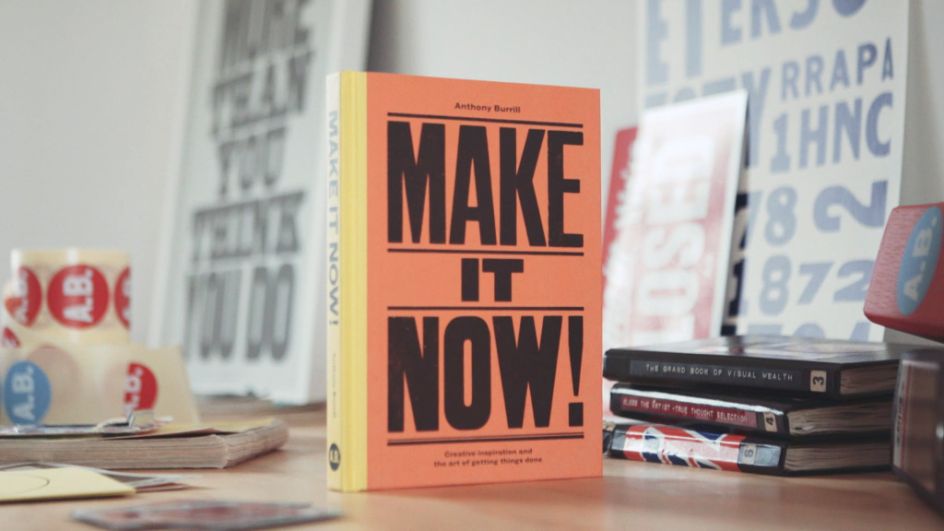
Make It Now! book
So what advice would you give to those just breaking into the industry?
Don't imagine people who have some sort of profile have got everything sorted, because they haven't. To some extent, we're all just making it up as we go along. You just have to find your own way.
Start something and keep doing it. If something hasn't worked out after three months, don't give up. Keep going. Success doesn't come overnight. Equally, if something isn't working, don't be afraid to change direction. Whatever you do, never stop putting your work out there and always make an effort to meet new people.
It's great to talk to others and learn that they've been through the same challenges.
Because we're visual communicators, we do create maybe a false image of what it is to be a designer. I think following people through social media, you get one side of the story. You don't get all the disappointments. All the mistakes. It's always good to meet people for real. Then you can work it out pretty quick.
Is there anyone in the design industry whose work you really admire?
I love work that’s made with integrity, wit and humour. People like Erik Kessels and Eike König blaze an inspiring creative trail.
What can we expect from you next?
An acid house record. For real. It’s a collaboration with my friend David Ducaruge, a musician and producer in Berlin. Oh, and I’m working on an exciting new book project too!

















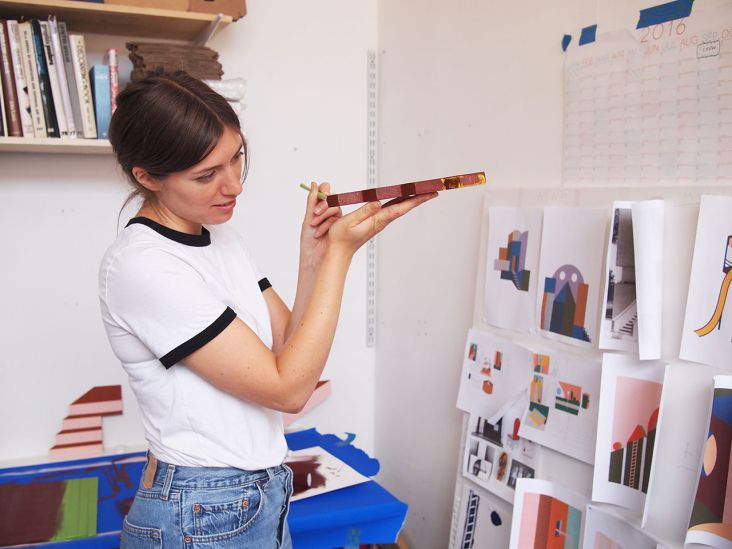
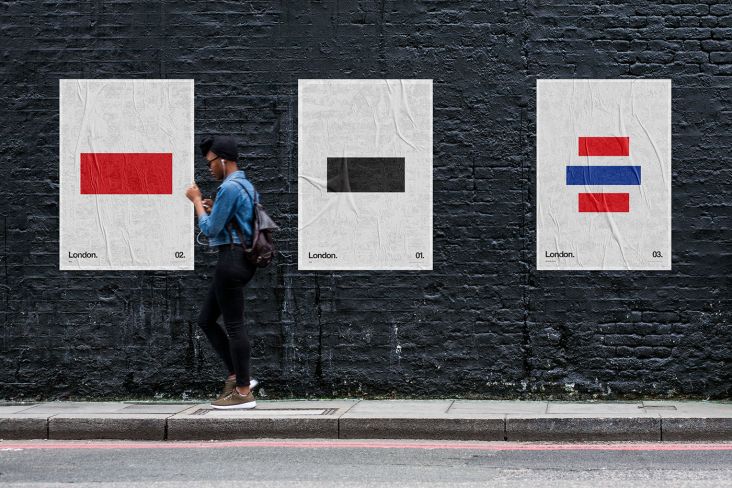
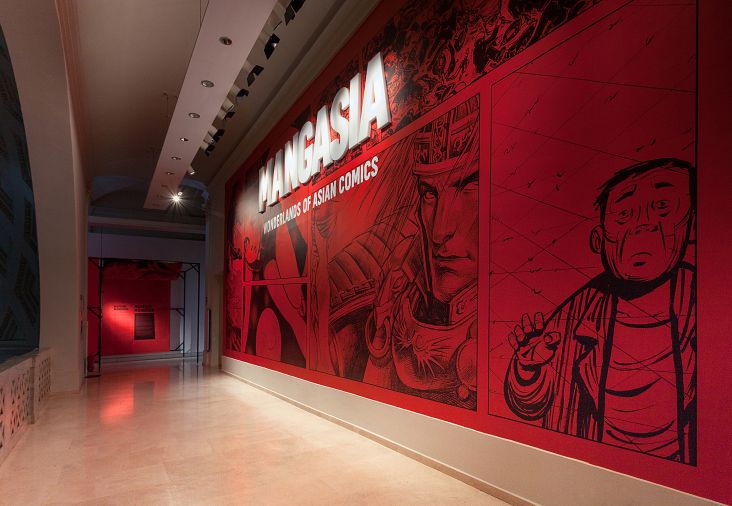
](https://www.creativeboom.com/upload/articles/be/be6a9c37030e334919ffcb2bfa70766d362bfca8_732.jpeg)
